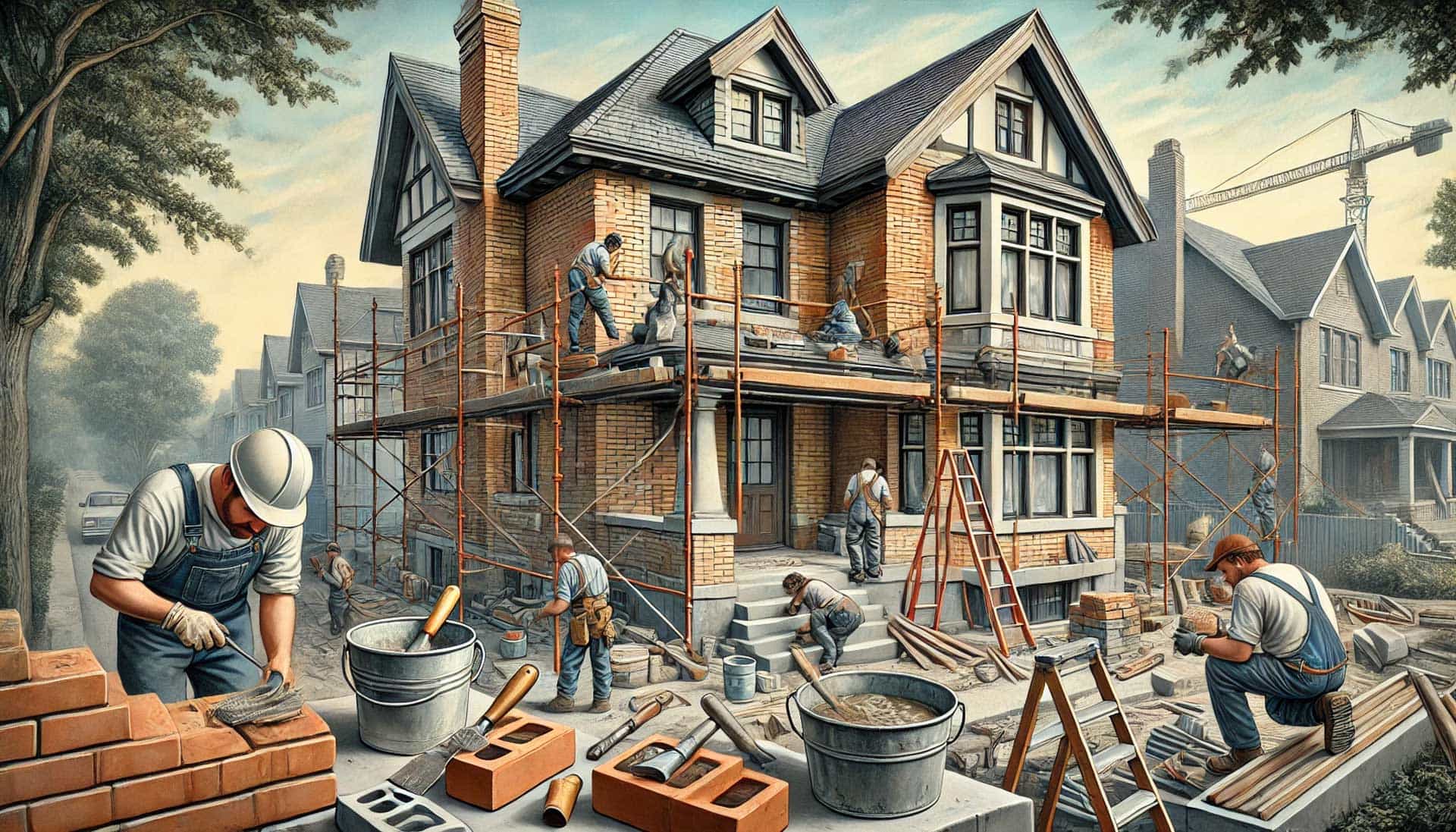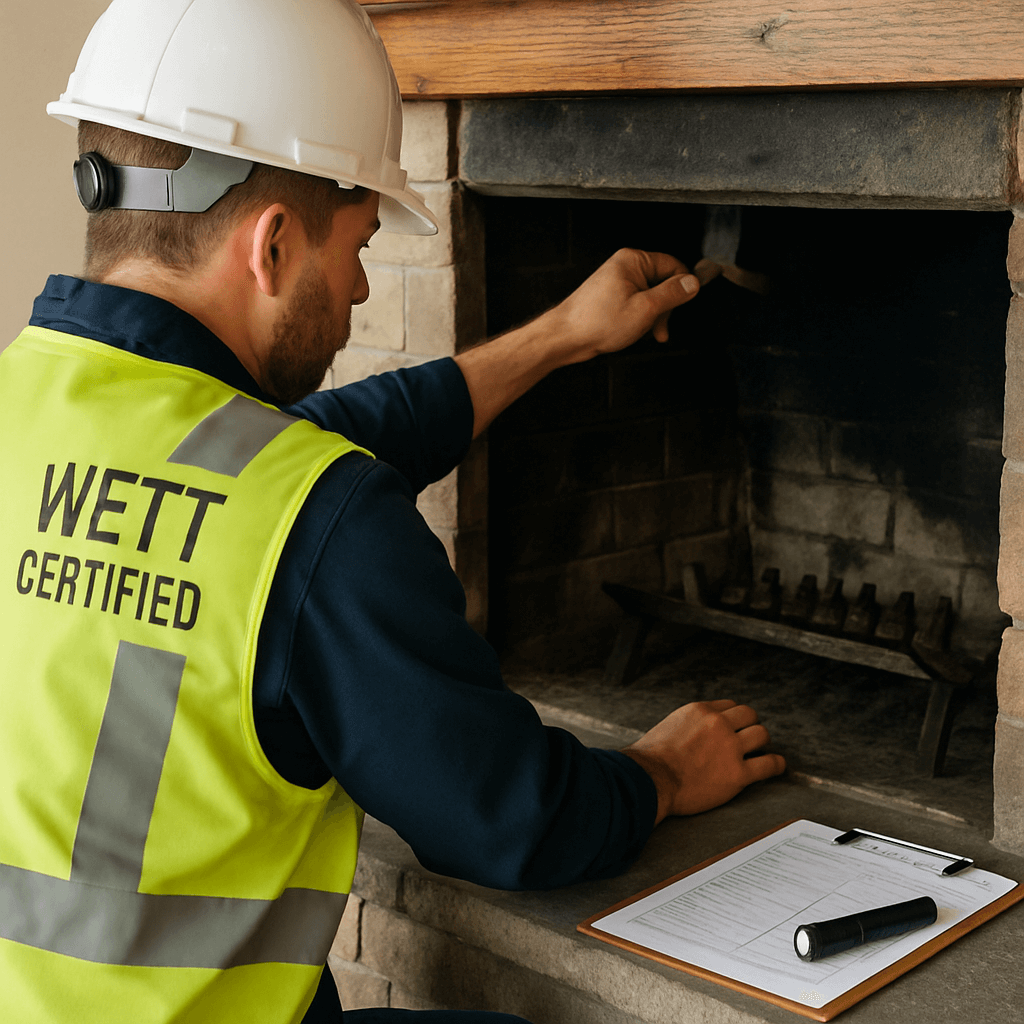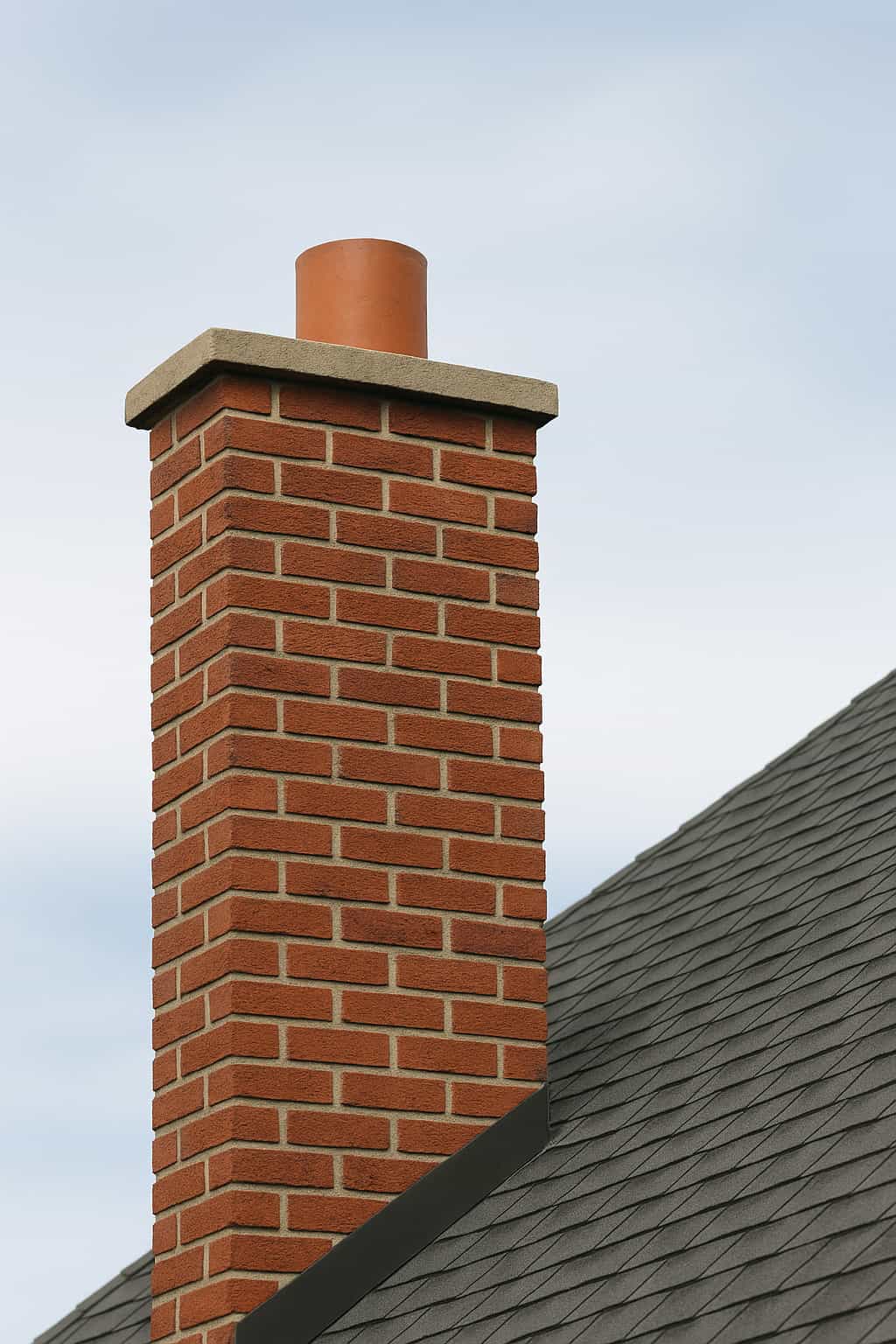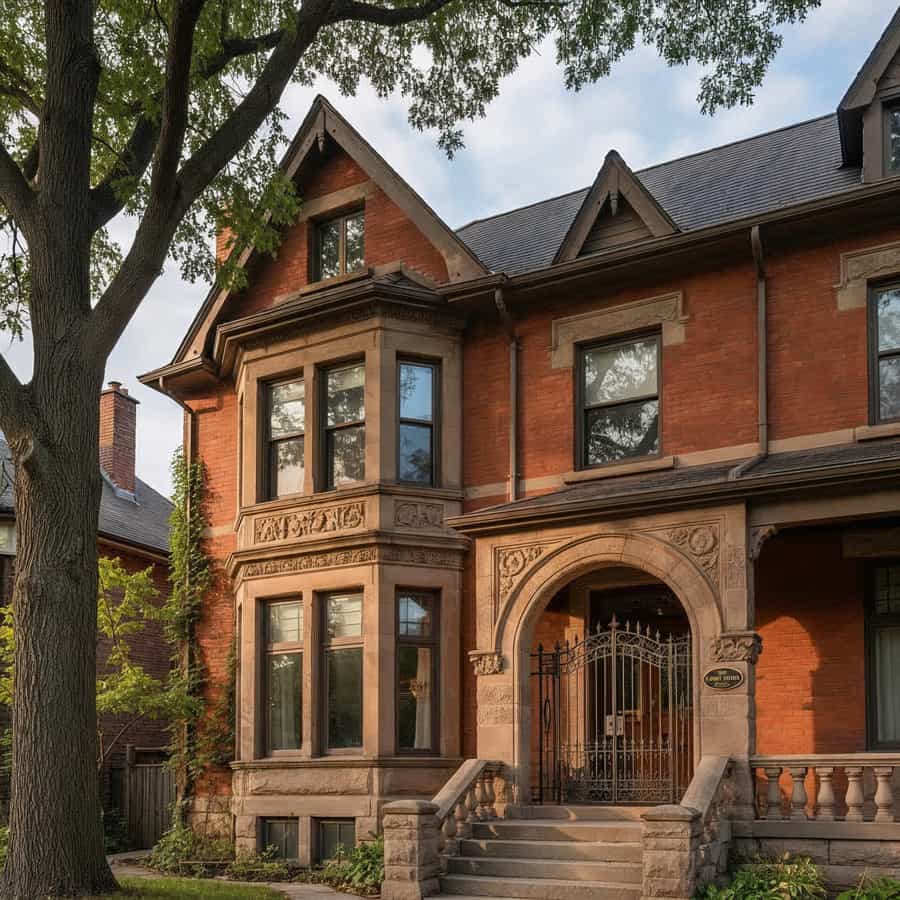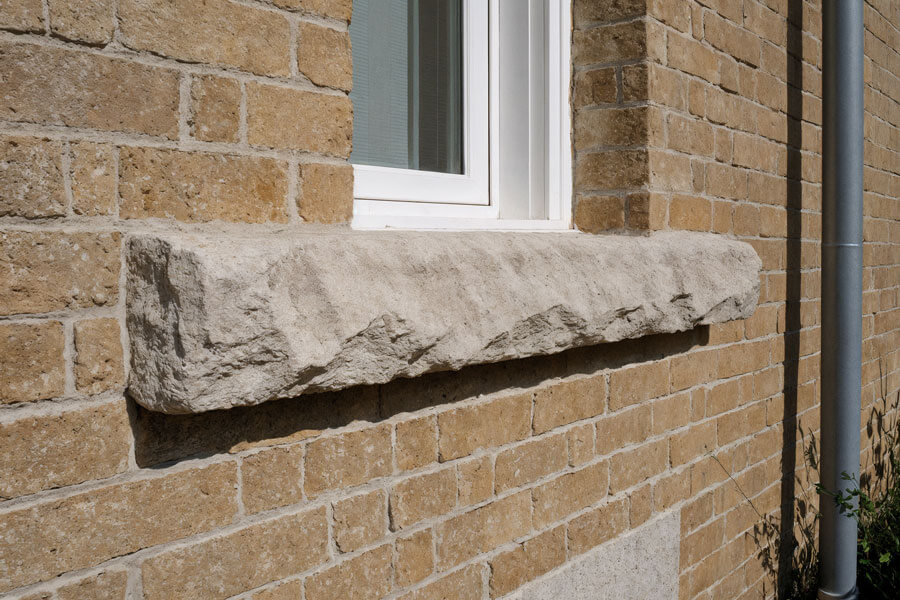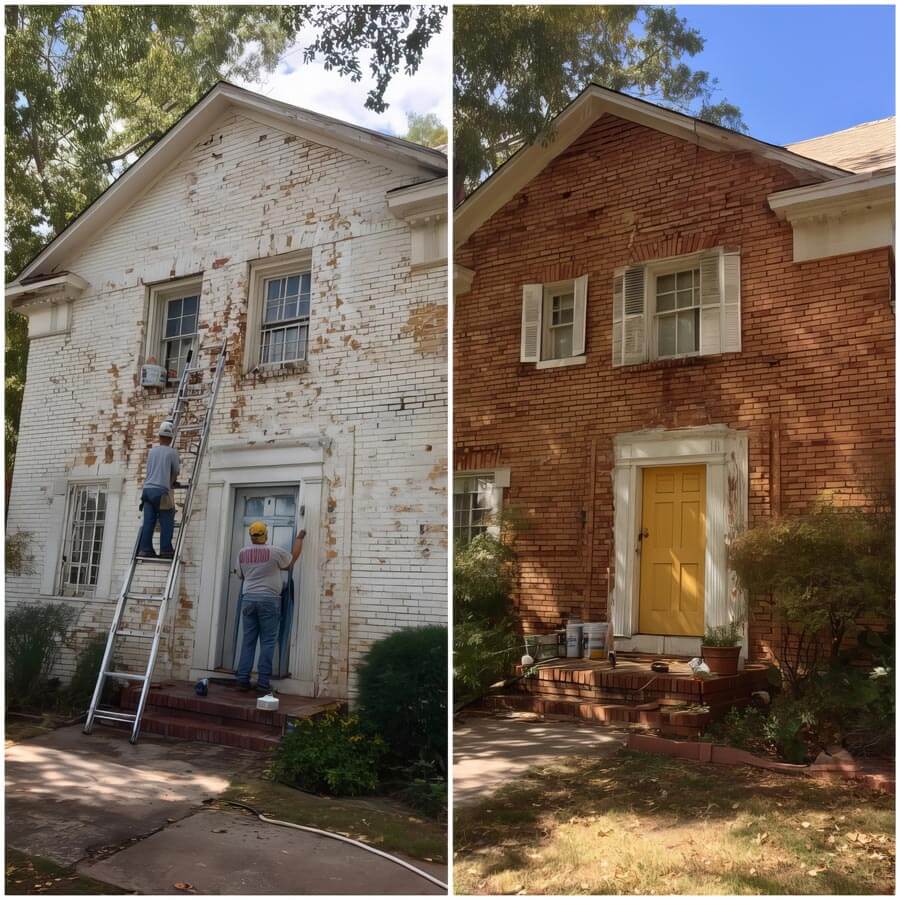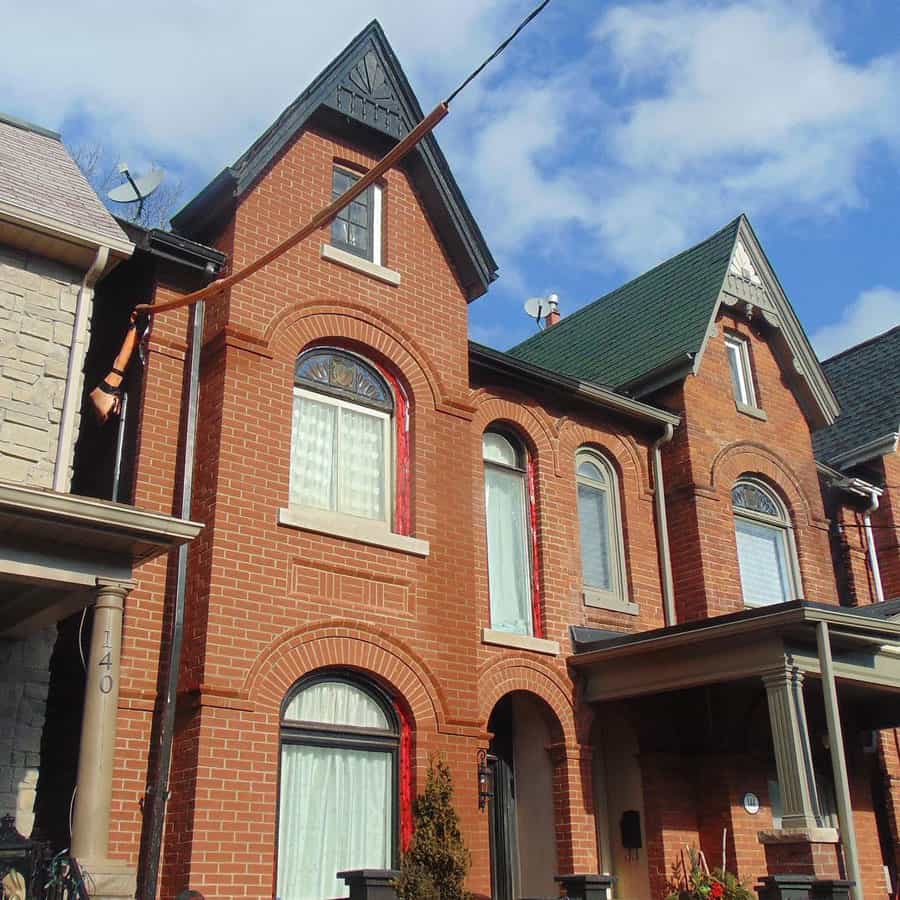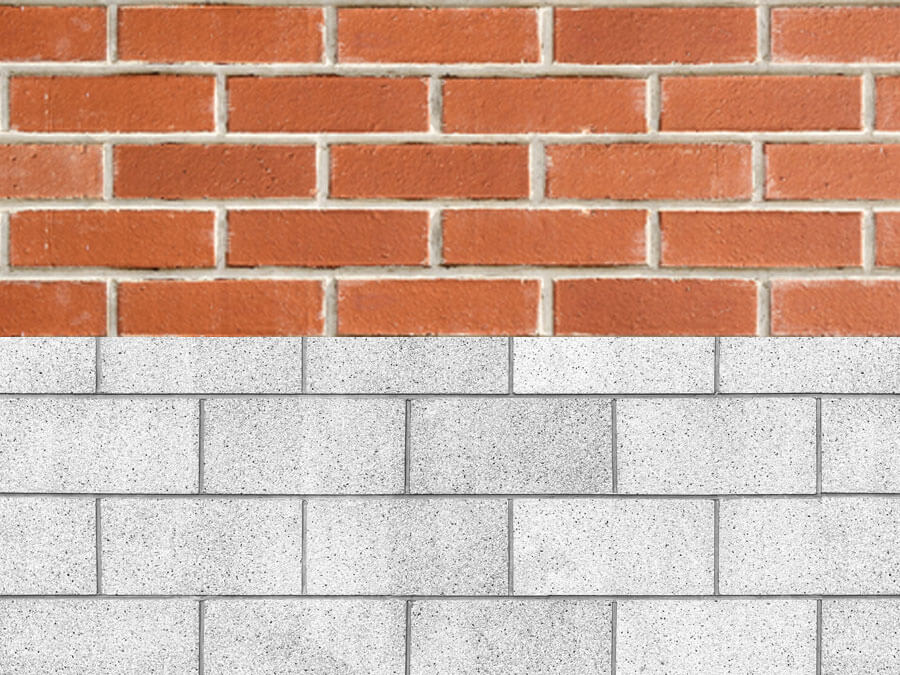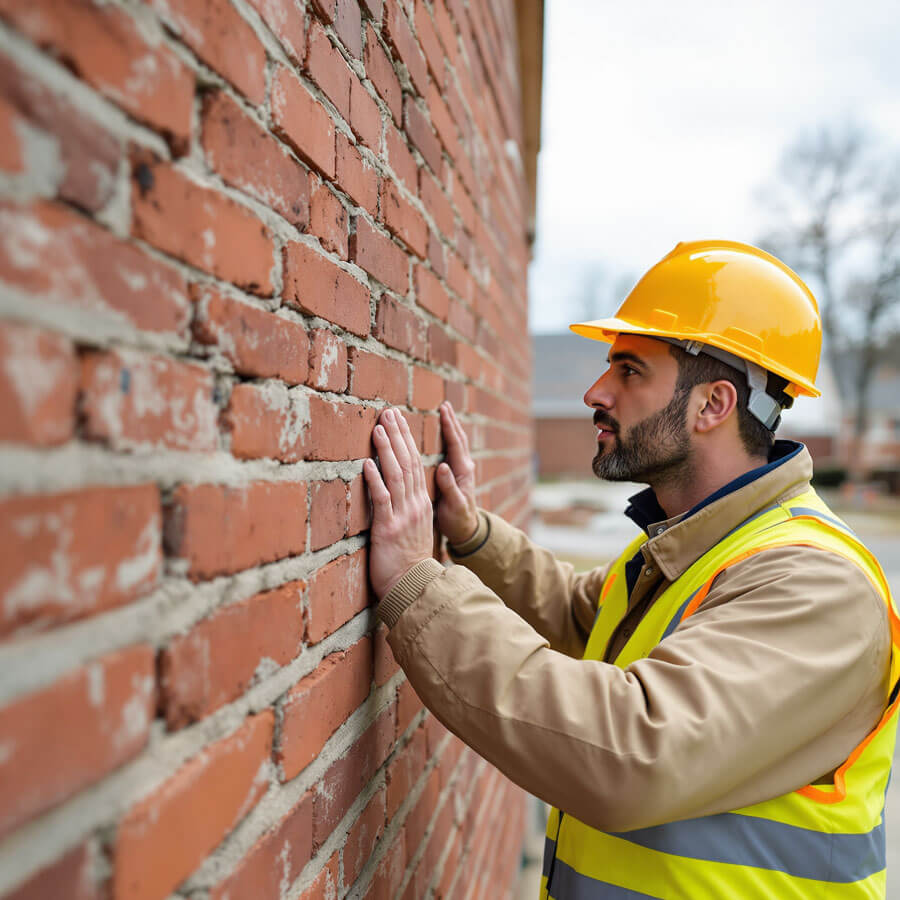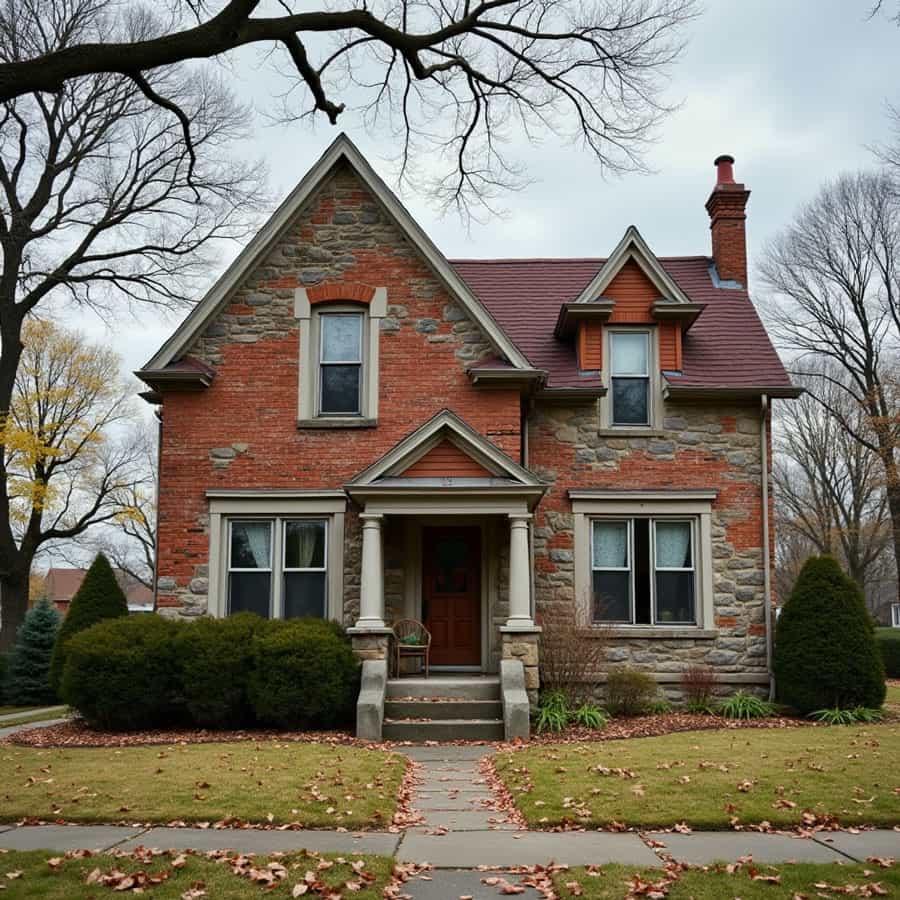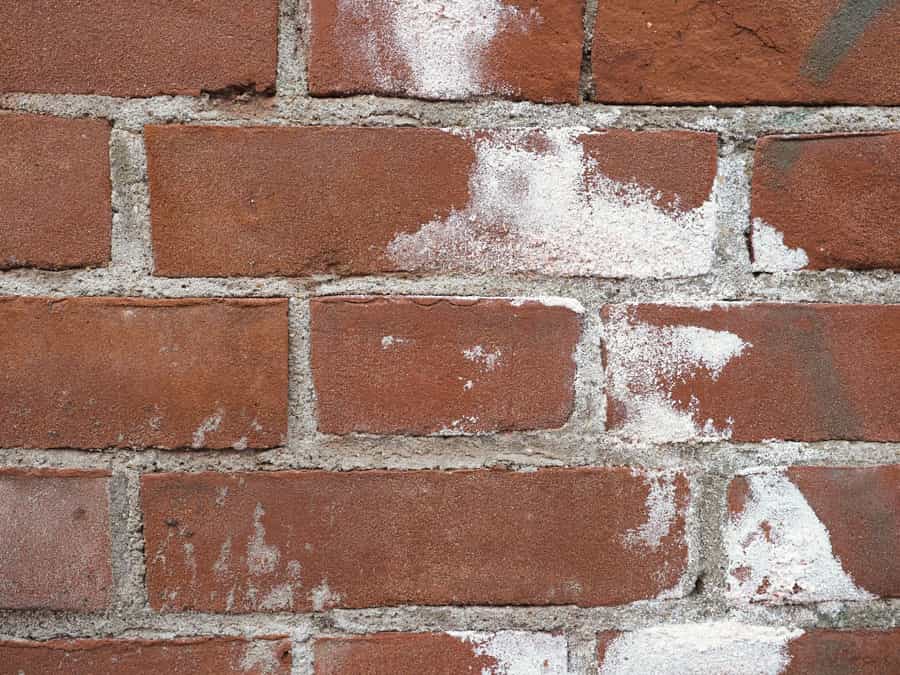Are you considering a masonry restoration project but feeling overwhelmed by the process? Look no further! In this comprehensive guide, we’ll take you from start to finish, demystifying the world of masonry restoration and providing you with the knowledge and confidence you need to bring your project to life.
Whether you’re dealing with a crumbling brick wall, deteriorating mortar, or unsightly stains on your masonry, proper restoration is essential for preserving the beauty and structural integrity of your building. From assessing the damage and selecting the right materials to executing the restoration with precision, we’ll cover it all.
Our expert team of masonry professionals will share invaluable tips and insights accumulated from years of experience in the industry. We’ll explore different restoration techniques, such as tuckpointing and repointing, and delve into the importance of regular maintenance to prevent future damage.
Get ready to embark on a rewarding journey of restoring and reviving your masonry. With our guide by your side, you’ll be equipped to tackle even the most challenging restoration projects with ease and confidence. Let’s bring your masonry back to life!
Understanding masonry restoration
Masonry restoration is the process of repairing and reviving damaged or deteriorated masonry structures, such as brick walls, stone facades, and concrete surfaces. It involves a comprehensive approach to address various issues, including crumbling mortar, cracked bricks, and unsightly stains or discoloration. This intricate process requires a deep understanding of masonry materials, construction techniques, and the unique challenges that come with restoring historical or older buildings.
At the core of masonry restoration lies the preservation of the structural integrity and aesthetic appeal of these timeless structures. Masonry, which includes materials like brick, stone, and concrete, is known for its durability and longevity, but it is not immune to the ravages of time, weather, and environmental factors. Proper restoration techniques are essential to ensure the continued functionality and visual appeal of these architectural elements.
Masonry restoration encompasses a wide range of techniques, from tuckpointing and repointing to cleaning, repairing, and even replacement of damaged or deteriorated components. Each project is unique, requiring a tailored approach to address the specific issues at hand. By understanding the fundamentals of masonry restoration, homeowners, building owners, and contractors can make informed decisions and ensure the successful execution of their restoration projects.
Importance of masonry restoration
Masonry restoration is not just about aesthetic improvements; it plays a crucial role in preserving the structural integrity and long-term viability of masonry structures. These buildings, whether they are historic landmarks, commercial properties, or residential homes, are invaluable assets that deserve meticulous care and attention.
One of the primary reasons for undertaking masonry restoration is to address structural issues. Over time, the elements can take a toll on masonry, leading to cracking, spalling, and even the complete deterioration of mortar and bricks. If left unattended, these problems can compromise the structural stability of the building, posing serious safety concerns and potentially leading to costly repairs or even the need for demolition.
Beyond structural considerations, masonry restoration also plays a crucial role in maintaining the aesthetic appeal of a building. Weathering, environmental pollutants, and other factors can cause discoloration, staining, and unsightly damage to the masonry surface. By restoring the masonry, building owners can enhance the visual appeal of their property, preserve its historical character, and increase its overall value.
Proper masonry restoration also helps to protect the building’s occupants. Deteriorating masonry can lead to the release of harmful particles, such as asbestos or lead, which can pose health risks. By addressing these issues through restoration, building owners can create a safer and more comfortable environment for the people who use the space.
Common signs of masonry damage
Identifying the signs of masonry damage is the first step in determining the need for restoration. By recognizing these issues early on, building owners can take proactive steps to address them before they escalate into more serious problems. Some of the most common signs of masonry damage include:
- Crumbling or cracking mortar: Over time, the mortar between bricks or stones can deteriorate, leading to cracks, crumbling, and the overall weakening of the masonry structure.
- Spalling or flaking of bricks or stones: This occurs when the surface of the masonry material begins to peel or flake off, often due to water infiltration or freeze-thaw cycles.
- Efflorescence: The appearance of white, powdery deposits on the surface of the masonry is a sign of moisture-related issues, such as water seepage or rising damp.
- Discoloration or staining: Environmental factors, such as pollution, weathering, or biological growth, can cause discoloration or unsightly stains on the masonry surface.
- Structural cracks or deformation: Severe damage, such as large cracks or bulges in the masonry, can indicate underlying structural problems that require immediate attention.
- Loose or missing bricks or stones: The loss or displacement of individual masonry units can compromise the structural integrity of the building and create opportunities for further damage.
By recognizing these common signs of masonry damage, building owners can take the necessary steps to address the issues and prevent them from escalating into more costly and complex restoration projects.
Assessing the scope of the restoration project
Before embarking on a masonry restoration project, it is crucial to conduct a comprehensive assessment of the scope of the work required. This process involves a thorough inspection of the masonry structure, identifying the extent and nature of the damage, and determining the appropriate restoration techniques to address the issues.
The assessment process typically begins with a visual inspection of the masonry, conducted by experienced professionals such as masonry contractors or building inspectors. They will closely examine the entire surface area, looking for the signs of damage mentioned in the previous section. This inspection may also involve the use of specialized tools, such as moisture meters or endoscopic cameras, to detect hidden issues within the masonry structure.
Once the initial inspection is complete, the next step is to determine the underlying causes of the masonry damage. This may involve investigating factors such as water infiltration, structural movement, or environmental stressors. Understanding the root causes of the damage is essential for developing an effective restoration plan that addresses the problem at its source, rather than just treating the symptoms.
Based on the findings of the assessment, the restoration team will then develop a detailed scope of work, outlining the specific tasks and techniques required to restore the masonry to its former condition. This may include activities such as tuckpointing, brick or stone replacement, surface cleaning, and the application of protective coatings or sealants. The scope of work will also take into account any unique challenges or considerations, such as the historical significance of the building or the presence of hazardous materials.
Gathering the necessary tools and materials
Successful masonry restoration projects require the right tools and materials to ensure the work is carried out efficiently and effectively. The specific equipment and supplies needed will depend on the scope and complexity of the restoration project, but there are some essential items that are common to most masonry restoration endeavors.
One of the most important tools for masonry restoration is the tuckpointing or pointing mortar. This specialized mortar is formulated to match the color, texture, and strength of the existing mortar, ensuring a seamless and durable repair. The restoration team will carefully select the appropriate mortar mix, taking into account factors such as the age and composition of the original mortar.
In addition to the mortar, masonry restoration projects often require a variety of hand tools, such as trowels, chisels, and brushes, to remove damaged mortar and apply the new material with precision. Power tools, like angle grinders or rotary hammers, may also be necessary for more extensive repairs or the removal of severely deteriorated mortar.
Depending on the project, the restoration team may also need to gather materials for masonry replacement, such as bricks, stones, or concrete blocks, that match the existing construction. These materials must be carefully selected to ensure a visually harmonious and structurally sound integration with the existing masonry.
Finally, the restoration team will need to equip themselves with personal protective equipment (PPE), such as gloves, goggles, and respirators, to ensure the safety of the workers and the building occupants during the restoration process. By having the right tools and materials on hand, the restoration team can tackle the project with confidence and efficiency, delivering high-quality results.
Preparing the site for restoration work
Before the actual restoration work can begin, it is essential to properly prepare the site to ensure the safety of the workers, the building occupants, and the surrounding environment. This preparation phase involves a series of crucial steps that set the stage for a successful and efficient restoration project.
One of the first tasks in site preparation is to establish a safe work zone. This may involve setting up barriers, signage, and access control measures to restrict unauthorized entry and minimize the risk of accidents or injuries. The work area should be clearly delineated, and any hazardous materials or debris should be properly contained and disposed of in accordance with local regulations.
Next, the restoration team will need to address any potential hazards or obstructions that could interfere with the restoration work. This may include the removal of vegetation, the relocation of outdoor furniture or equipment, and the protection of adjacent surfaces or structures that could be affected by the restoration activities.
Careful planning is also essential to ensure the continued functionality of the building during the restoration process. The restoration team will work closely with the building owners or managers to develop a schedule that minimizes disruptions to the building’s occupants and operations. This may involve phasing the restoration work, creating temporary access routes, or implementing temporary measures to maintain the building’s essential services.
Finally, the restoration team will need to ensure that the necessary utilities and resources are available on-site to support the restoration work. This may include access to water, electricity, and proper waste disposal facilities, as well as the establishment of a secure storage area for tools, materials, and equipment.
Step-by-step process of masonry restoration
The actual process of masonry restoration involves a series of carefully executed steps that address the specific issues identified during the assessment and preparation phases. While the specific techniques may vary depending on the project, there are some common steps that are typically followed in a masonry restoration project.
- Mortar removal and tuckpointing: One of the most critical steps in masonry restoration is the removal of deteriorated or damaged mortar, a process known as tuckpointing. This involves carefully chiseling out the old mortar, ensuring that the new mortar will have a solid surface to bond with.
- Brick or stone replacement: In cases where individual masonry units are severely damaged or missing, the restoration team may need to replace them with new bricks, stones, or concrete blocks that match the existing construction.
- Surface cleaning: Depending on the extent of discoloration or staining, the restoration team may need to employ specialized cleaning techniques, such as chemical treatments or abrasive cleaning, to restore the masonry surface to its original condition.
- Crack repair: Any structural cracks or deformations in the masonry will need to be addressed through a combination of stabilization, reinforcement, and patching techniques.
- Waterproofing and sealant application: To prevent future moisture-related issues, the restoration team may apply water-repellent coatings or sealants to the masonry surface.
- Finishing touches: The final step in the restoration process may involve the application of a protective coating, the reintegration of the restored masonry with the surrounding building elements, and the cleanup of the work site.
Throughout the restoration process, the team will closely monitor the progress, ensuring that each step is carried out with the utmost care and attention to detail. Regular quality checks and inspections will help to identify any issues or deviations from the restoration plan, allowing for timely adjustments and the delivery of a high-quality, long-lasting restoration outcome.
Tips for ensuring a successful restoration project
Embarking on a masonry restoration project can be a complex and challenging endeavor, but with the right approach and attention to detail, it is possible to achieve exceptional results. Here are some valuable tips to ensure the success of your masonry restoration project:
- Hire experienced professionals: Partnering with a reputable masonry restoration contractor or specialist is essential for the successful execution of your project. Look for individuals or companies with a proven track record of delivering high-quality work and a deep understanding of masonry materials and techniques.
- Conduct thorough research and planning: Before the restoration work begins, invest time in researching the best practices, materials, and techniques for your specific project. Develop a detailed restoration plan that addresses all the identified issues and outlines the necessary steps.
- Use compatible materials: Ensure that the new mortar, bricks, or stones used in the restoration process are compatible with the existing masonry construction. This will help to maintain the structural integrity and visual harmony of the restored structure.
- Pay attention to environmental factors: Consider the local climate, weather patterns, and environmental conditions that may impact the restoration work. Adjust your techniques and materials accordingly to ensure the long-term durability and performance of the restored masonry.
- Prioritize safety: Masonry restoration can involve hazardous materials and activities, so prioritize the safety of the workers and building occupants throughout the project. Implement proper safety protocols, provide necessary personal protective equipment, and ensure compliance with local regulations.
- Maintain open communication: Establish clear and frequent communication with the building owners or managers throughout the restoration process. This will help to manage expectations, address any concerns or issues that arise, and ensure the successful completion of the project.
- Implement a comprehensive maintenance plan: Once the restoration work is complete, work with the building owners to develop a comprehensive maintenance plan. This will help to prevent future damage and ensure the long-term preservation of the restored masonry structure.
By following these tips and staying committed to quality workmanship, you can ensure the success of your masonry restoration project and the long-term preservation of your valuable masonry assets.
Maintaining and preserving restored masonry structures
The successful completion of a masonry restoration project is just the beginning of the journey. To ensure the long-term preservation and performance of the restored masonry, it is essential to implement a comprehensive maintenance plan that addresses the ongoing care and upkeep of the structure.
Regular inspections and preventive maintenance are key to maintaining the integrity of restored masonry. Building owners or managers should establish a routine schedule for inspecting the masonry, looking for signs of new damage or deterioration, such as cracking, spalling, or the presence of efflorescence. By addressing these issues quickly, they can prevent minor problems from escalating into more significant and costly repairs.
One of the most critical aspects of maintaining restored masonry is the ongoing care and maintenance of the mortar. Tuckpointing, the process of repairing deteriorated mortar, should be performed on a regular basis to ensure the structural stability and weatherproofing of the masonry structure. Depending on the climate and environmental conditions, tuckpointing may be required every 5 to 20 years, or even more frequently in some cases.
In addition to regular inspections and mortar maintenance, building owners should also consider the implementation of protective measures, such as the application of water-repellent coatings or sealants. These treatments can help to prevent moisture infiltration, which is a leading cause of masonry damage. By maintaining these protective measures, the restored masonry can continue to withstand the elements and preserve its visual appeal and structural integrity.
Regular cleaning and maintenance of the masonry surface is also essential for preserving the restored appearance. Periodic cleaning, using gentle, non-abrasive methods, can help to remove any accumulated dirt, grime, or biological growth, keeping the masonry looking its best. Additionally, the building owner should be vigilant in addressing any new stains or discoloration as they arise, to prevent them from becoming more challenging to remove over time.
Conclusion: The long-term benefits of masonry restoration
Masonry restoration is a complex and multifaceted process, but the long-term benefits of investing in this endeavor are undeniable. By restoring and preserving the masonry structures that are the foundation of our built environment, we are not only safeguarding their structural integrity but also honoring their historical and architectural significance.
The restoration of masonry not only enhances the visual appeal of a building but also contributes to its overall value and marketability. A well-maintained, beautifully restored masonry structure can be a source of pride for building owners and a source of admiration for the community. This, in turn, can lead to increased property values and the preservation of the unique character and charm of historic neighborhoods and districts.
Beyond the aesthetic and financial benefits, masonry restoration also plays a crucial role in promoting sustainability and environmental responsibility. By extending the lifespan of existing structures, we reduce the need for new construction and the associated energy consumption and resource depletion. Additionally, the use of durable, long-lasting masonry materials contributes to the overall resilience and longevity of our built environment.
Ultimately, the decision to undertake a masonry restoration project is a testament to the commitment to preserving our architectural heritage and creating a more sustainable future. By investing in the restoration and maintenance of masonry structures, we are not only safeguarding the past but also shaping the built environment of generations to come. With the right approach, expertise, and dedication, the rewards of masonry restoration can be truly transformative, both for the individual property and the broader community.

